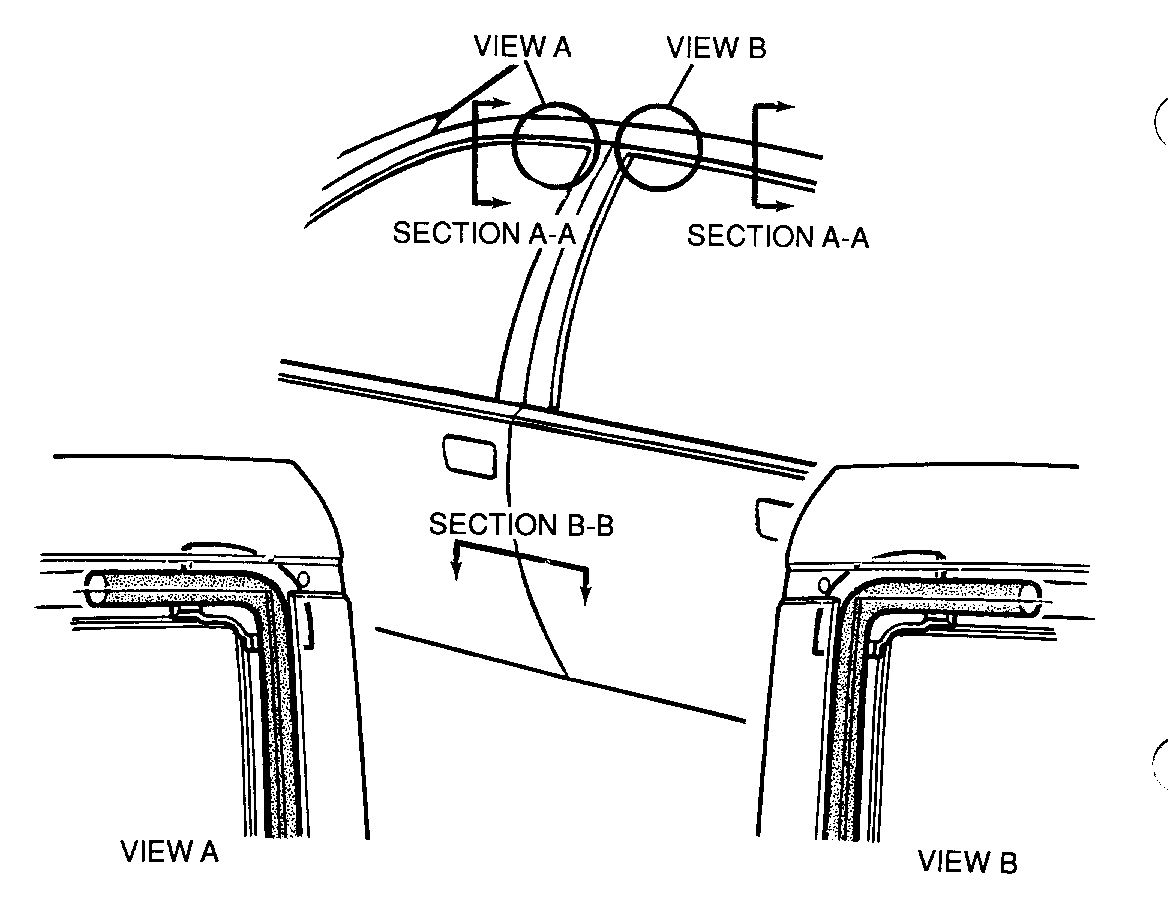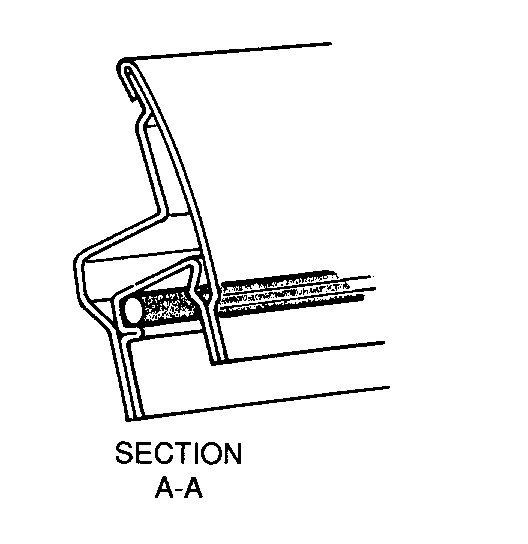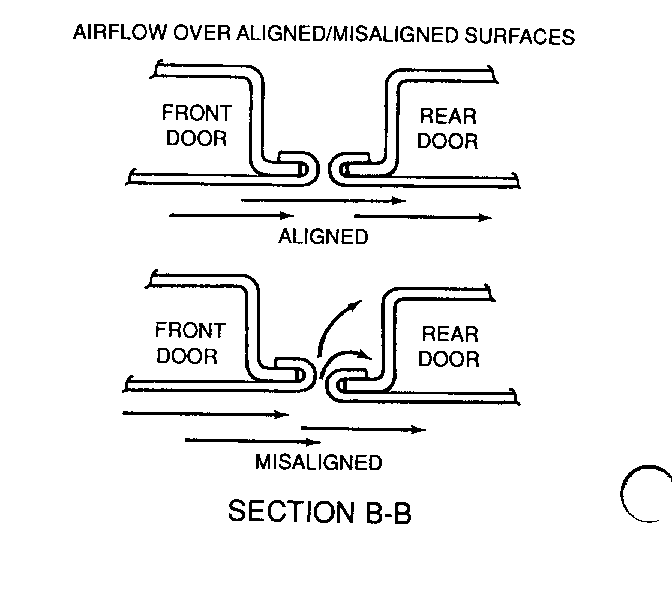WINDNOISE DIAGNOSIS (INFORMATIONAL)

SUBJECT: WINDNOISE (INFORMATIONAL)
VEHICLES AFFECTED: 1991-92 "B" MODEL
APPLICATION:
----------- 1991-92 "B" Car Buick Sedan And Wagon
Customer comments regarding windnoise may be addressed by using the procedures on the individual items listed in this bulletin.
Proper diagnosis may be made with a variety of tools and methods including stethoscopes, dust guns, sonic instruments, visual inspections, dollar bill method etc. It is important to remember that windnoise can best be described as air leaking from inside of the vehicle outward while traveling at highway speeds. Turbulence or windrush is best described as air passing over and around body openings and mouldings.
Prior to any repairs, the front door, auxiliary weatherstrips and door opening weatherstrips should be visually inspected for proper gaps, fits, weatherstrip contact, and sealing. The vehicle should also be road tested to determine location and degree of windnoise/turbulence on the vehicle.
Some primary areas of windnoise may be:
1. Upper "A" pillar door opening weatherstrip to door frame.
2. Front window run channel to door frame.
3. Rear door window run channel to door frame.
Some primary areas of windrush may be:
4. Front edge of the rear door may be outboard slightly of the front door.
5. Windshield side reveal mouldings gap to glass along the "A" pillar.
PROCEDURES ARE:
1. Door opening weatherstrip to door frame.
If test indicates noise in this area, one of the simplest and most effective checks for weatherstrip leaks is the tracing powder or chalk test. First, clean the weatherstrip surface with glass cleaner. Next, apply the powder or chalk to the weatherstrip's mating surface. Press the panel against its mating surface firmly, without slamming, closing it completely. When you reopen it, there will be an imprint left wherever the weatherstrip made good contact with the mating surface. Gaps in the imprint of the tracing powder on the weatherstrip indicate a poor seal surface. Adjust the door inboard to obtain necessary contact.
2. Front door window run channel to door frame.
With the glass in the down position, pull down and outboard on the run channel to remove it from the retainer. Using bedding and glazing compound, run a 5mm bead on the inboard edge of the retainer, see SECTION A-A, starting at the base of the mirror all the way along the top to the rear corner. In the upper rear corner, (see VIEW B) it will be necessary to add a larger bead of compound. From the upper rear corner continue running the bead down to the belt line.
3. Rear door window run channel to door frame.
With the glass in the down position, pull down and outboard on the run channel to remove it from the retainer, remove only the front and top portion of the run channel from the retainer. With bedding and glazing compound run a 5mm bead of sealer to the inboard edge of the run channel (see SECTION A-A) starting at the front at the belt line all the way up to the top and along the top to the rear corner. In the upper rear corner (see VIEW B) it will be necessary to pull down slightly on the weatherstrip and fill the cavity in that corner.
4. The front edge of the rear door may be outboard slightly of the front door (see SECTION A-A). Adjust the front of the rear door inboard so the rear door is flush to 1.5mm inboard of the front door.
5. Windshield side reveal moulding gap to glass along the "A" pillar.
Windshield side reveal moulding gap to glass may be repaired by removing the auxiliary seal to gain access to the retaining screws. With the moulding removed, elongate the retaining holes in the moulding in the direction of movement needed with a small rattail file. NOTE: As an aid, install the moulding to the glass and check flushness. At that time, check the retaining screw holes to determine how far the screw holes have to be elongated. Reinstall the side reveal moulding and the auxiliary seal.
IMPORTANT: Be careful not to trap the primary seal under the auxiliary seal when reinstalling the auxiliary seal.
WARRANTY INFORMATION:
For vehicles repaired under warranty use:
Windshield Reveal Window Run Channel
Labour Time: 0.3 Hr. Labour Time: 0.3 Hr.
Add: 0.2 Hr. For Other Side Add: 0.2 For Each Additional Door
For all other Warranty Information, use Applicable Labour Operation.



General Motors bulletins are intended for use by professional technicians, not a "do-it-yourselfer". They are written to inform those technicians of conditions that may occur on some vehicles, or to provide information that could assist in the proper service of a vehicle. Properly trained technicians have the equipment, tools, safety instructions and know-how to do a job properly and safely. If a condition is described, do not assume that the bulletin applies to your vehicle, or that your vehicle will have that condition. See a General Motors dealer servicing your brand of General Motors vehicle for information on whether your vehicle may benefit from the information.
